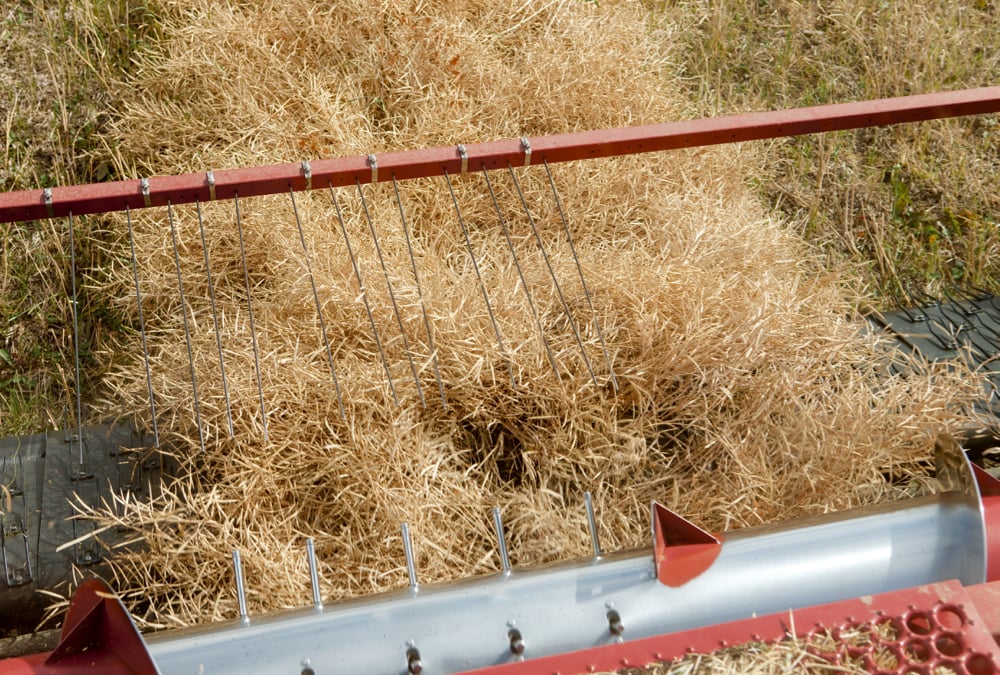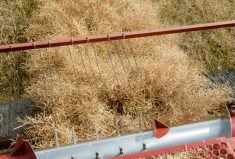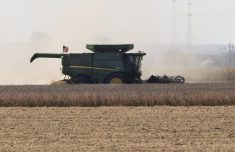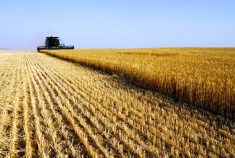VANCOUVER — Like many others, Kristen Podolsky was amazed by soybean fields across Manitoba last July, but not for the right reasons.
Podolsky, a Manitoba Pulse Growers Association production specialist, said she struggled to identify soybeans from the highway because many fields were inundated with volunteer canola.
“In some cases I wasn’t sure if it was a soybean field or a canola field,” she said in January following her presentation at Manitoba Ag Days, the annual trade show held in Brandon. “In Western Manitoba I found it in 60 percent of fields.”
Read Also

Alberta harvest wrapping up: report
Harvest operations advanced to 96 per cent complete in Alberta as of Oct. 7, with only a few late-seeded cereal and canola fields remaining, according to the latest provincial crop report.
A soybean field loaded with volunteer canola may be visually offensive and worrisome, but the Roundup resistant weed isn’t always a threat to soybean production, said Paul Gregoire, a University of Manitoba plant science graduate student.
Gregoire, who spoke at the Weed Science Society of America annual meeting held in Vancouver Feb. 3-6, said volunteer canola typically doesn’t reach a density that substantially restricts yields.
“It seems like it is more of an aesthetic problem than an actual weed management problem.”
In 2012 and 2013, Gregoire set up experiments across Manitoba to assess the yield loss from volunteer canola in soybeans and identify a weed density level that warranted spraying.
He placed different concentrations of canola seed in the soybean plots to achieve a range of volunteer canola densities.
Assuming a five percent yield loss as a threshold to take action, Gregoire found that volunteer canola densities from two to five plants per sq metre and higher might justify a herbicide treatment.
Rob Gulden, a University of Manitoba weed scientist, said there isn’t a magic number or defined threshold where growers should spray out a patch of volunteer canola.
Researchers need to survey the densities of volunteer canola in soybean fields to assess the situation in Manitoba, he added.
“It is an eyesore, that’s for sure … (but) are we going to hit the economic threshold? Well, in some cases maybe not,” he said. “It’s hard to say. I don’t think we know enough.”
As an informal part of his research, Gregoire also wandered into soybean fields to count the number of intrusive plants per sq. metre.
During his presentation in Vancouver, Gregoire showed a photograph of a soybean crop infested with volunteer canola. At first glance it looked like an agronomic problem, but the density of volunteer canola wasn’t particularly severe.
“This first patch (had) 0.6 plants per sq. metre,” he said, gesturing towards the photo. “I would say that’s not worth looking at for control.”
Another patch had 2.7 plants per sq. metre, which might warrant spraying on that spot, he said.
Producers on a canola, wheat and soybean rotation might consider a Liberty Link canola to avoid two Roundup Ready crops, but Podolsky said that isn’t a comprehensive solution.
“The (Roundup Ready) seed can be in the bank for so long… we’re going to be dealing with it for years.”

















